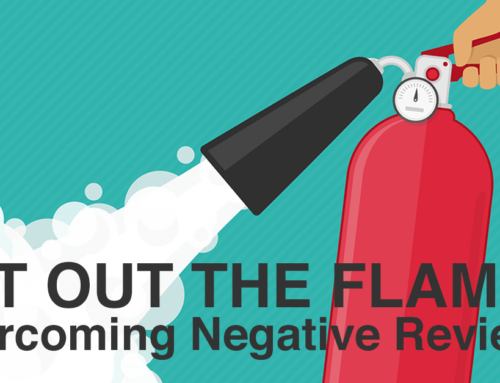Repeat this conversion mantra after me.
Always. Be. Converting.
It seems that many small and midsize businesses assume that having a website is enough. No, it’s not enough.
If you’ve been following the Twisted Puppy blog for any length of time, you’ve read about our approach to website development and online marketing. Since we primarily work with small and midsize businesses, problem one is getting traffic. We invest wisely in content marketing, email marketing, social media marketing, and search engine marketing. And once we have traffic, we face a second problem: converting traffic into business.
Over the past few years, this need has generated a nascent industry called Conversion Rate Optimization (CRO). CRO is part neuroscience, part art and part math. It’s challenging work, but it’s fun. We recently visited Austin to learn (way) more about conversion at conference called ConversionXL Live 2016. Suffice it to say many ideas were shared and discussed during this 3 day event (450 attendees from 28 countries (furthest being New Zealand)). Many hallway conversations included phrases like “Mind. Blown.” or “I can’t wait to try this when I get back…”.
So here’s our abridged list of key ConversionXL takeaways:
1. You should always be experimenting.
Even on a small website. More traffic helps, but test what you can. In a competitive landscape, NO ONE can afford to set it & forget it. Google rewards regular content updates and growing traffic. Run simple split tests early, starting with easy hypotheses (e.g., speeding up page load times will create a 5% lift, reducing to a single Call To Action (CTA) on a key sign-up page will give us a 10% lift, or improving the customer value proposition will give us a 15% lift). Conversion is a big experiment.
2. Your competitors probably have it wrong.
Don’t blindly copy your rivals. They probably know less about the internet than you, and they’re winging it. If you do copy them, do it in the form of a split test (heh heh) to borrow their “best” ideas. One presenter told the story of a client who feverishly copied their industry’s leader – years later, she was hired by the industry leader, who was totally flying blind. Twisted Puppy recently evaluated competition in the website hosting market, where everyone copies everyone (and it’s awful). It’ll be easy to split test a truly unique approach to see if differentiation can create a lift in conversions.
3. THERE ARE NO BEST PRACTICES. Except for split testing.
Experimentation is critical. Stop reading all those blogs (well, except maybe this one!) that talk about best practices. Since returning from the conference, we’ve been unsubscribing to any blog that lists “10 things you must do”. Seriously, there are too many snake oil salesmen out there. The best copywriters in the world guess wrong (we saw them do it at the conference). The best CRO people know that they don’t know the answers. So when you see one of those listicles, read it with caution. Let them give you ideas to try, but don’t take anything as gospel.
4. Learn your customers’ internal trigger(s).
What itch are you scratching? Talk about the pain your prospect has and how you can help. Are they seeking pleasure, avoiding pain, seeking hope, avoiding fear, seeking acceptance or avoiding rejection? Find their motivation and you’re halfway to your value proposition. We see so many websites that talk about themselves. Site visitors tune that out.
5. Social proof is big.
We started talking about this, and we’ll have more on this one from us later (it’s a large, important topic), but tapping the wisdom of crowds, good reviews and client testimonials are powerful conversion tools.
6. Metrics matter.
Circling back to #1 – you need to measure what you test. Keep track of what you do (before & after). Getting metrics is hard, and developing metrics you can trust is especially challenging. But you must. There are three outcomes to a split test: traffic improved, traffic declined and inconclusive. The only one that really sucks is the last one (at least you learn from the first two). Collect data and use it wisely.
7. Here comes mobile.
There’s a pattern developing in how many web users do their research. They start searching on the phone (what else do you do on the 405 or in the checkout line at the market?), then complete the transaction on a desktop or laptop. Capturing an email address from the phone is key, so if your website isn’t responsive for mobile, you’re going to be hating it in the next few months. Google has their bet on this emerging trend. Be good on all devices…or else.
8. Engagement, and hence segmentation, is a must.
Our favorite presentation of CXL2016 was from Rand Fishkin from Moz, arguably the king of Search Engine Optimization. SEO at a CRO event? Yes, because your enemy is bounce. When customers land on your site, you have to engage them to get them into a sales funnel. Focus on improving your content, targeting, rankings in your niche and CTAs. Apparently (from tests run by Moz), Search Engine Marketing (SEM) is a good thing for your pagerank too…
Always Be Converting: The State of Conversion in 2016
These eight key takeaways almost seem like common sense. Yet the marketplace is guilty of being lazy and not really focusing on conversion. The best of the best are running experiments every day. Big companies (e.g., Amazon, Google, Microsoft, Yahoo) do it to you every day. If you’re a small to midsize business, you must work on your conversion process or you’ll be left behind.
We once said Always. Be. Marketing. Now there’s a corollary. Always. Be. Converting.






![Video Engagement [Infographic]](https://twistedpuppy.com/wp-content/uploads/2017/08/twisted-puppy-blog-video-engagement-1-500x383.png)


Leave A Comment